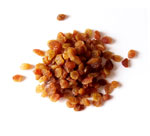Helping Kids: What the USDA Guidelines Offer for Pediatrics
Posted by: admin on: July 8, 2011
- By law, the US Department of Agriculture (USDA) Dietary Guidelines for Americans are reviewed and updated every 5 years to keep our health moving forward. The new guidelines, Dietary Guidelines for America, are different from previous versions in several ways.
- They are addressing a nation where most are undernourished when it comes to several key nutrients.
- The childhood obesity epidemic has taken center stage, putting pediatricians and family practitioners on the frontlines of one of the nation’s most pressing health concerns.
- The guidelines are evidence based and rely on a new online state-of-the-art evidence library to get the best answers to scientific questions.
- They end in a very hopeful way by saying that in 2015, when we reconvene, we expect that America’s health and nutrition will have moved forward.
- The 2005 guidelines ended with similar hope but didn’t get very far. The problem is that there’s a big disconnect between that goal of the dietary guidelines and the actual behavior of Americans.
- Most of us eat too much sodium. Most of us eat too much added sugar; too much saturated fat; too much in the way of refined grains; and not enough fruits, vegetables, and whole grains.
- The average American, according to this new report, is only getting about 60% of the vegetables that we need.
- That’s a low score, but the place that we fall the farthest short is with whole grains. We’re only getting about 15%, on average, of the amount that we need.
- The guidelines are for Americans 2 years of age and up, and recognize that childhood nutrition is central to all of our nutrition.
- We have the opportunity to start them on good foods. It would be great if half their grains were whole starting in the first year of life.
- One of the most useful things in the new guidelines is a snapshot of what Americans are actually eating.
- For kids 2-18 years of age, the guidelines list the top sources of calories for average Americans on a typical day.
- Number 1 is refined-flour desserts; number 2 is pizza; and number 3 is soda.
- In that whole top list of 25, the only vegetables on the list of top foods are French fries and chips. The only fruit on the top list of 25, coming in at place number 20, is fruit juice. Whole grains don’t make the list at all.
- In particular, the new guidelines focus on something called SOFAS: solid fats and added sugars. In kids, the main sources of solid fats are refined-grain desserts, pizza, and cheese; main sources of sugar are soda and its relatives.
- The guidelines are supported by a variety of electronic tools, resources, and apps to make it easier for us as clinicians, easier for parents, and easier for kids.
Read more at http://www.medscape.com/viewarticle/737199
Search
- drchasrani: Difficult to get such a data, authenticated at that. Try Times of India online library
- rakesh pore: hi, where can i get genuine information about "10 most common drugs sold in india?" i want it for a local project
- nilesh dutta: sir, Plz give detail about MBA Sports Management Thanks and Regards


Leave a Reply